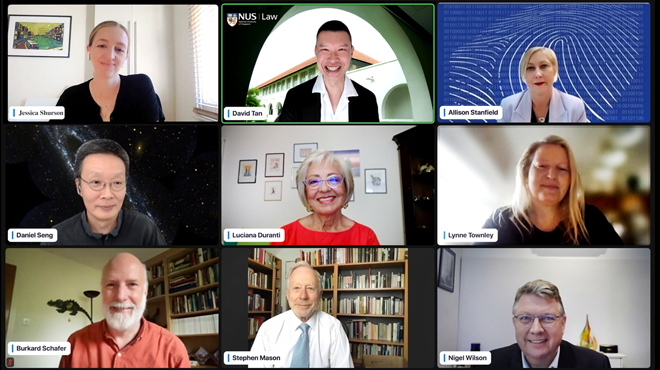Media - News
- Media
- Webinar and Launch of Electronic Evidence and Electronic Signatures
Webinar and Launch of Electronic Evidence and Electronic Signatures
| Part 1 | Part 2 |

The 5th edition of this well-established practitioner text, published by University of London Press and edited by Associate Professor Daniel Seng (Co-Director, TRAIL) and Mr Stephen Mason, was officially launched at a webinar hosted by TRAIL on 15 July 2022. Featuring presentations from distinguished contributors on topics ranging from authentication issues associated with cryptoassets, to the implications of artificial intelligence on the law of evidence, the webinar was attended by over 400 participants.
The late former Chief Justice Yong Pung How had emphasised: “It is every bit as important that a computer print-out tendered should be reliable whether or not it contains hearsay.” (Lim Mong Hong v Public Prosecutor [2003] SGHC 161 at [38]) In this spirit, to equip lawyers, regulators and scholars of evidence law with the knowledge required to navigate an age where almost all communications are facilitated by info-communications technology, the editors of the 5th edition of Electronic Evidence and Electronic Signatures had assembled a team of expert contributors to provide an exhaustive treatment of the law regarding electronic evidence.
Associate Professor Daniel Seng kicked off the webinar with an introduction to the law of electronic evidence. This was followed by a series of presentations by a number of the contributors. Ms Lynne Townley, Professor Burkhard Schafer, Professor Luciana Duranti, Dr Allison Stanfield, Ms Jessica Shurson and Dr Nigel Wilson each spoke on the topics they had written on in the book, ranging from the competency of witnesses regarding the trustworthiness (or lack thereof) of digital data, to the proof of electronic evidence. Mr Mason then rounded off the presentations, touching on the problems associated with the presumption, under the laws of several jurisdictions, that evidence produced by a computer which was in order at the material time may be trusted.
The event then progressed to a Q&A session where a lively discussion of the issues touched on during the presentations ensued. Overall, the webinar was both a well-deserved celebration of the efforts of the editors and contributors in putting together the latest edition of a reputable text and an interesting dive for participants into just a few of the complexities posed by the law of electronic evidence.

